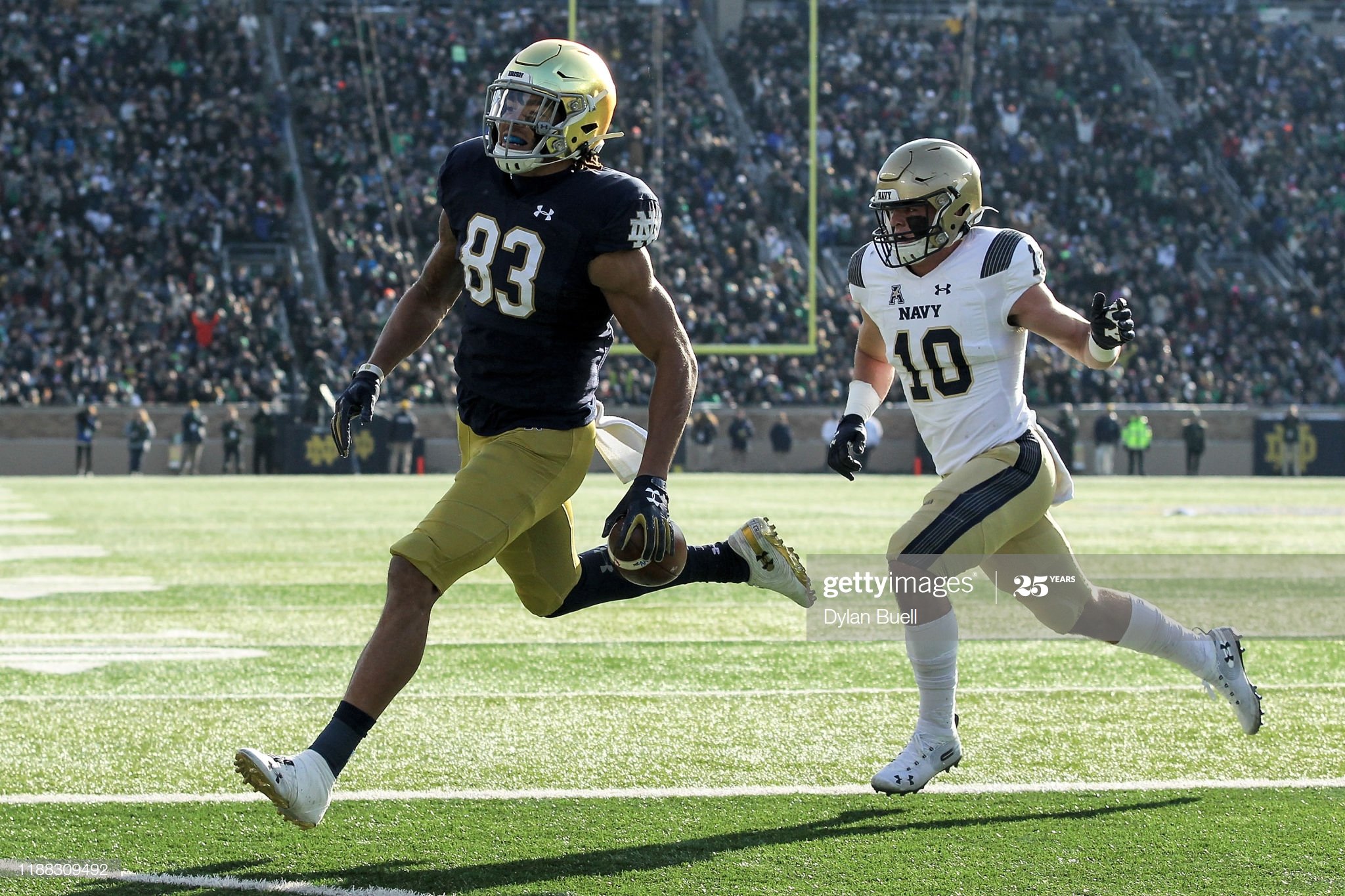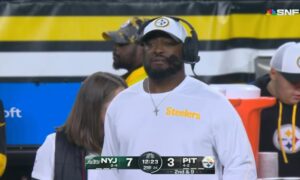When a big, 6’4” wide receiver was available to them with pick 49 overall in the second round, the Pittsburgh Steelers did not hesitate, to pull the trigger and bring him in, even if they already have a solidified top three at the position, and a potential urge to move back in the draft.
Not because they had a big want at that particular position generally, but because they coveted Notre Dame’s Chase Claypool specifically. You can debate the merits of their evaluation of Claypool as being worthy of that high a draft picks, but that was general manager Kevin Colbert’s explanation behind the decision.
“In the case of a wide receiver, we were excited that that player was available to us in particular”, he said when asked if they were specifically looking to get a wide receiver with their top pick. “Not that position. Chase Claypool the player was available to us for all the reasons we stated”.
Prior to the Steelers selecting Claypool, 10 other wide receivers had already been drafted in the first 48 selections. 13 overall would be drafted through the first two rounds. By their third-round pick, 17 wide receivers overall had already been drafted with names like Antonio Gandy-Golden, K.J. Hill, and James Proche remaining on the table.
“Again, we never go into it looking for a position. We have ideas where strengths are, we have ideas where our wants are. And if they match up at a certain point, great”, Colbert expanded in explaining their approach and how they came to Claypool in particular. “He’s big, he’s fast, he’s strong, he’s physical. He can make a contested catch. Again, when a player like that is available, it was easy. We didn’t go in looking for any particular position”.
The big man provides some serious insurance at a position that potentially is already strong at the top but is lacking in depth. Seeding in behind JuJu Smith-Schuster, James Washington, and Diontae Johnson, Claypool gives them a four-deep look in which they should be comfortable.
He also protects them against the inevitable of losing at least one or more of these players over the course of the next two offseasons, with Smith-Schuster a free agent in 2021 and Washington due to reach that status in 2020.
Drafting wide receivers is like playing Hungry Hungry Hippos. No matter how many marbles you might think you have, you always need another one, and you better get them before you need them, because somebody else will.
It’s truly a position you have to consistently feed. Gone are the days where you can expect to have two top wide receivers in-house for the long term, like the Steelers did in the 1970s, let alone three, and three is the absolute minimum today.








